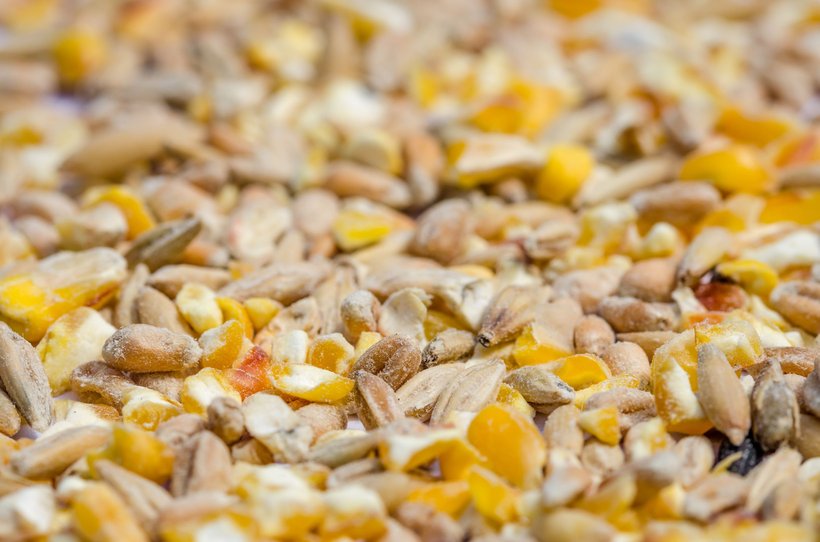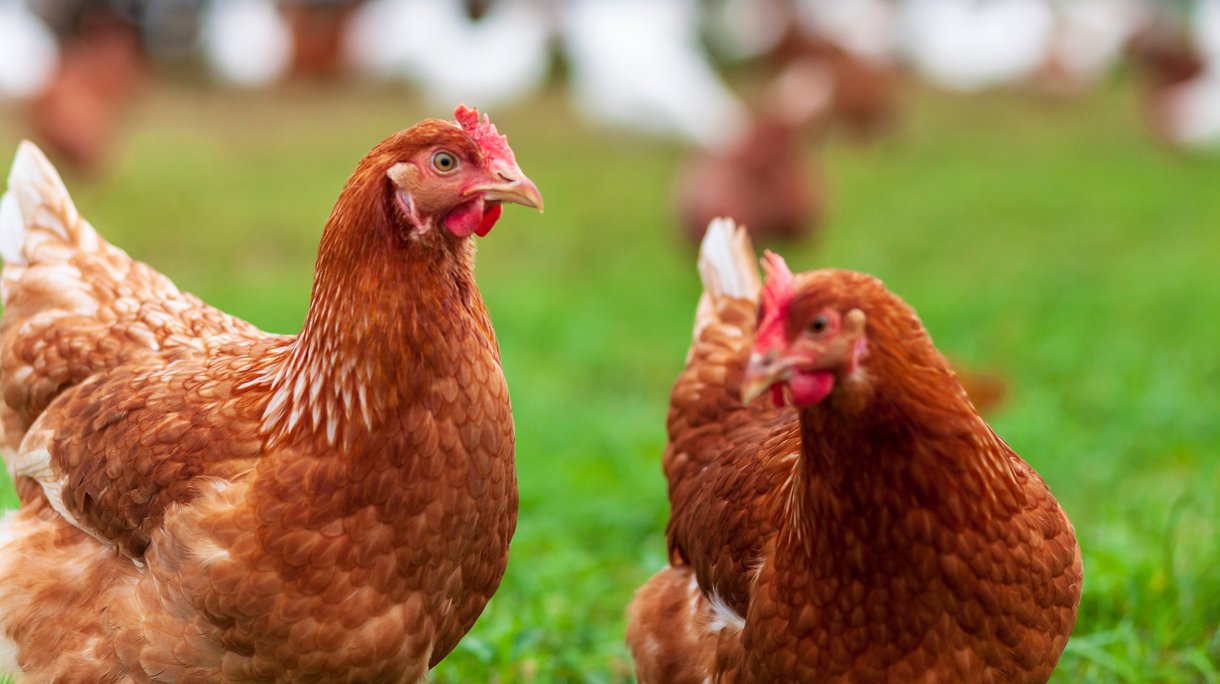
Published on June 10, 2021
Soy Free Poultry Diets
Soy is a concentrated protein source, with a high concentration and good amino acid profile for livestock production. Because of its favorable characteristics, soy is widely used as the main protein source in our global feed and food supply, think of its inclusion in poultry feed. But the use of soybean or soybean related products in animal feed is under debate. According to the World Wide Fund for Nature (WWF), the global production of soy has doubled over the last two decades (World Wide Fund for Nature, 2021). In the EU, concerns about the amount of imported soybean for animal feed are increasing, while the EU is still depending heavily on the import of protein sources for animal feed (de Boer, van Krimpen, Blonk, & Tyszler, 2014). According to the European Parliament, the EU livestock sector is vulnerable to price volatility and trade distortions, which can reduce the profitability of the sector (de Boer, van Krimpen, Blonk, & Tyszler, 2014). While a major concern from the NGO’s is deforestation of tropical rain forest, savannahs and grassland for soybean cultivation, with all its risks for endangering species, local livelihoods and contribution to climate change due to greenhouse gas production (World Wide Fund for Nature, 2021).
In 2018, 15.54 million ton of soybeans, 263.000 ton of soybean oil and 18 million ton of soybean meal, were imported in the EU (Hiel, Geling, & de Vries, May 2020). These protein sources mainly originated from Brazil, the United States and Argentina. In order to improve the sustainability of soy, FEFAC (the European Feed Manufacturers’ Federation) developed a soy sourcing guideline (SSG) (FEFAC, February 2021). FEFAC estimated that 77% of the EU soy imports in 2018 originated from low deforestation risk areas, while 38% is covered by the FEFAC SSG compliant standard and 19% by the deforestation-free standards (Hiel, Geling, & de Vries, May 2020). Nevertheless, there is increasing interest for soy free laying hen diets. This article will focus on the existing alternatives for soy and the effect of soy free poultry diets
Alternatives for soy
Well known examples of alternative protein sources to replace soybean meal are sunflower meal, rapeseed meal, cotton seed meal, groundnut meal and DDGS (dried distiller grains with soluble). When using alternative ingredients to replace soy, it is key to formulate based on the levels of digestible amino acids. Most protein sources have different amino acid patterns compared to soybean meal. Formulating on digestible amino acid levels will help to maintain the correct amino acid balance at the right levels in the diet. The majority of commonly used alternative ingredients have lower protein digestibility and utilization rates compared to soy-bean meal (illustrated in Table 1). Part of this lower protein digestibility is caused by a higher level of antinutritional factors in those alternative protein sources, like gossypol, glucosinolates and trypsin inhibitors.
Table 1 - raw materials and protein digestibility
| Raw materials | Protein digestibility of laying hens |
|---|---|
| Soy bean meal | 86% |
| Sunflower meal | 85% |
| Rapeseed meal | 76% |
| Cottonseed meal | 65% |
| Groundnut meal | 85% |
| DDGS | 71% |
| Meat and bone meal | 73% |
Proper digestibility of protein results in improved feed efficiency, as a result this will have a positive impact on the sustainability of egg production. Higher protein digestibility results in less protein leftovers towards the end of the intestines. This results in a reduced risk to develop intestinal health problems. It is well known that too much protein in this part of the intestines may cause inflammation, this inflammation negatively affects the health and welfare of the laying hen. Protein digestibility depends heavily on overall intestinal health, but next to this also on the feed processing, think off grinding quality and heat treatment, the type of raw materials used in the diet, type of enzymes and on the total diet composition. It is key to feed alternative protein sources already during the rearing period and slowly introduce new ingredients to the flock. In this way, the chicks, pullets and laying hens are better able to cope with these alternative diets. It will put less stress on their intestines, resulting in better gut health. When adding new feed ingredients to the birds’ diet, take a close look to the actual feed consumption and the production results in the days that follow. This will prevent an overestimation of the digestibility of your new feed composition and allows you to steer in time. In the world of layer breeding, it is important to breed laying hens that can perform well on diets containing alternative feed materials. In this way the breeding company is already selecting the birds (and the birds’ families) that are very well capable to deal with the inclusion of alternative feed materials in their diets whilst maintaining their persistency in producing the highest amount of 1st quality eggs per hen housed. Through careful genetic selection and mating, their genes are passed on via the grandparents to the parent stock, from where they are passed on to the commercial layers. Our mission is to set the standard for sustainable animal breeding. By selecting the birds that can cope well with these lower quality diets (i.e. diets with higher levels of antinutritional factors and lower digestibility rates), and that they stay in good condition whilst maintaining their premium performance we contribute towards more efficient and sustainable egg production. We are testing our birds in different parts of the world, and feeding them with a wide variety of poultry diets. All these results are incorporated back in our breeding database, and via our careful selection decisions we have been able to develop layer breeds that can cope very well on alternative diets. Looking at the current developments across the globe with the increase in feed prices, the pressure on the inclusion of soy and to the future of sustainable egg production we are convinced this is the desired direction.
Risks for deficiency
In order to achieve and maintain the laying hen’s good performance when feeding on soy free diets, it is important to prevent nutrient deficiencies at all times. Depending on the raw material availability, it might be more expensive to obtain a correct balance of alternative protein sources.
In general, the essential digestible amino acids used for formulation are known as: Lysine, Methionine, Methionine + Cysteine, Threonine and Tryptophan. However, when formulating for soy free diets and taking into account only the digestible amino acids mentioned above, there is a risk for isoleucine deficiency as well, as shown in Table 2. This will result in lower egg weights, especially when providing soy free diets from the start of lay onwards.
Table 2 amino acid composition different raw materials
| Nutrients | Requirement (in g/h/d) | Soybean meal | Rapeseed meal | Sunflower meal |
|---|---|---|---|---|
| Crude protein (%) | 18.5 | 46.4% | 34.4% | 38.2% |
|
Digestible amino acids |
Requirement (in % of protein) | Ratio (in % of protein) | Ratio (in % of protein) | Ratio (in % of protein) |
|---|---|---|---|---|
| Lysine | 46 | 55% | 43% | 29% |
| Methionine | 25 | 13% | 18% | 20% |
| Methionine + Cysteine | 40 | 24% | 37% | 32% |
| Threonine | 32 | 32% | 32% | 28% |
| Tryptophan | 10 | 12% | 10% | 10% |
| Valine | 41 | 41% | 39% | 41% |
| Isoleucine | 37 | 40% | 31% | 35% |
| Arginine | 48 | 67% | 52% | 74% |
Another important nutrient is potassium, potassium levels in soybean products are relatively high. Removing soybean meal or full fat soya from the diet results in lower potassium levels. This should not be a real problem, but it is important keep in mind the dietary electrolyte balance between the drinking water and the feed.
Summary
When taking into account the differences between nutrients, it is for sure possible to formulate soy free diets for laying hens. As explained, most alternative protein sources have different amino acid patterns compared to soybean meal. Formulating on digestible amino acid levels will help to maintain the correct amino acid balance in the diet. Nutrient deficiencies will affect the health and performance of the flock, monitor the quality of the diet and the behavior of your flock carefully.
References
- CVB Feed Table. (2018). Chemical compositions and nutritional values of feed materials. The Netherlands: Federatie Nederlandse Diervoederketen and Wageningen Livestock Research.
- de Boer, H., van Krimpen, M., Blonk, H., & Tyszler, M. (2014). Replacement of soybean meal in compound feed by European protein sources: effects on carbon footprint. Wageningen: Wageningen UR Livestock Research.
- FEFAC. (february 2021). Soy sourcing guidelines 2021: Towards a mainstream market transition for responsible soy.
- Hiel, R., Geling, V., & de Vries, T. (May 2020). European soy monitor: Insights on European responsible and deforestation-free soy consumption in 2018. Schuttelaar & Partners.
- Nature, W. W. (2021, March). World Wide Fund for Nature. Retrieved from Soy: https://wwf.panda.org/discover/ our_focus/food_practice/sustainable_production/soy/

